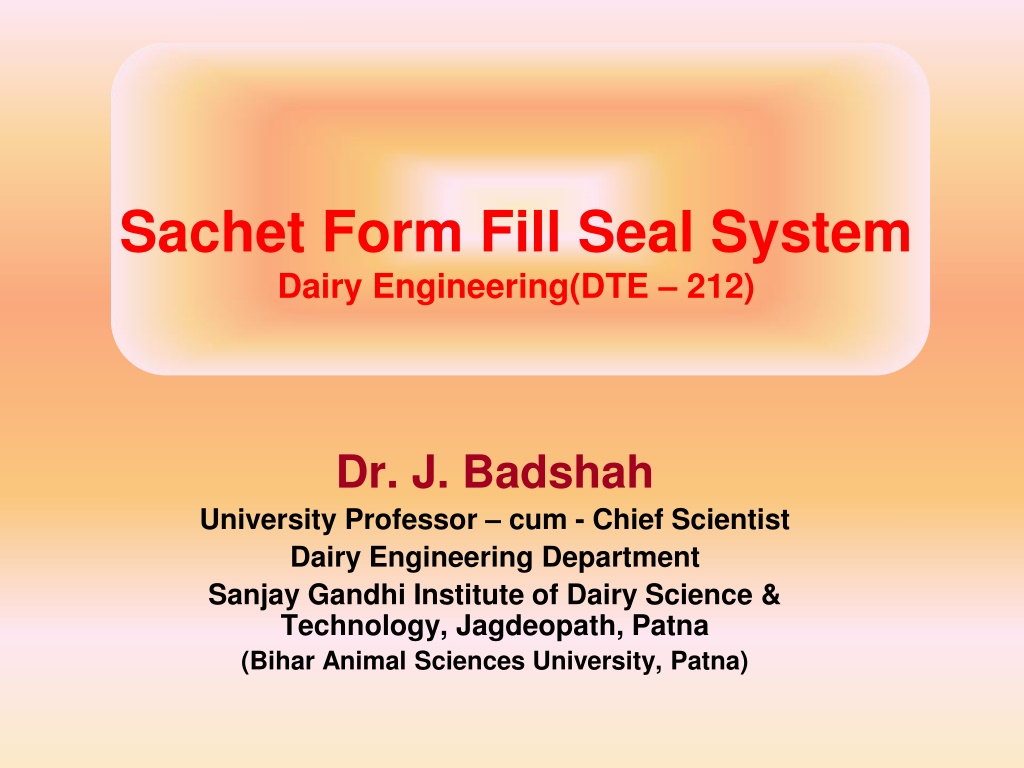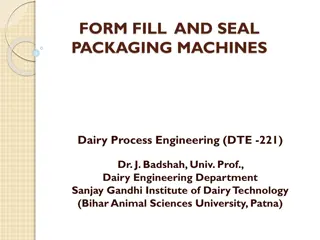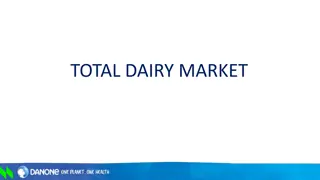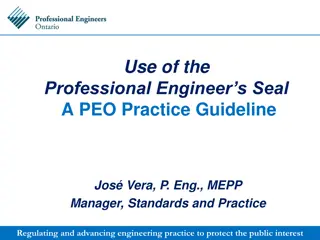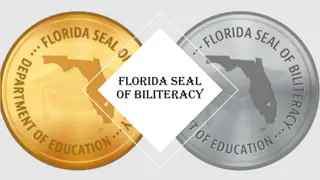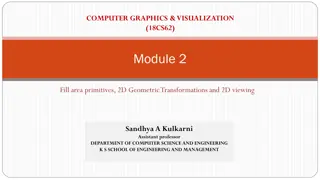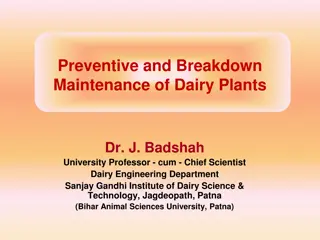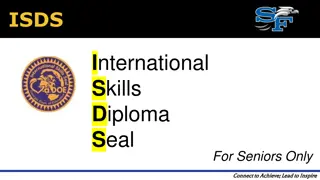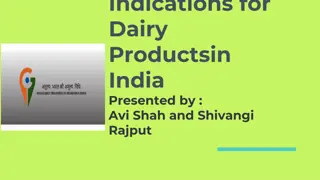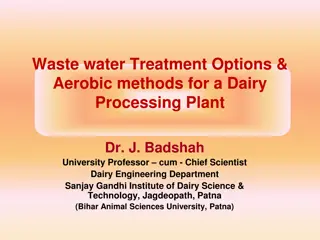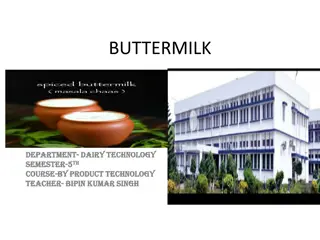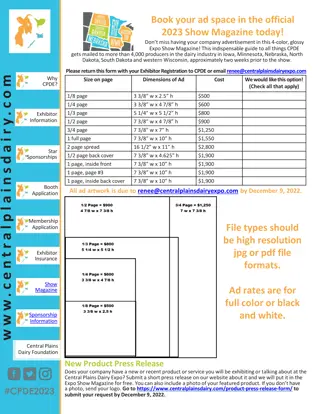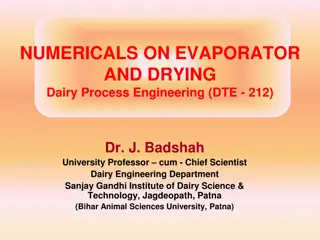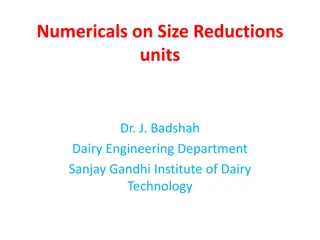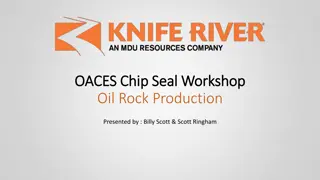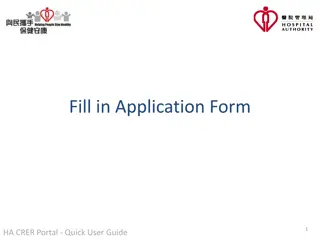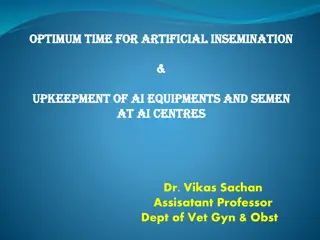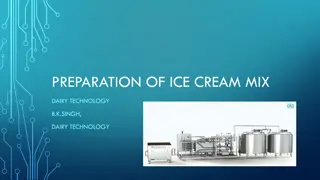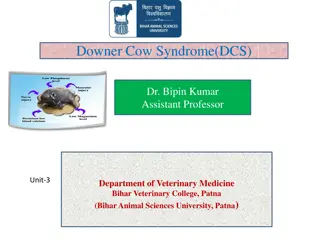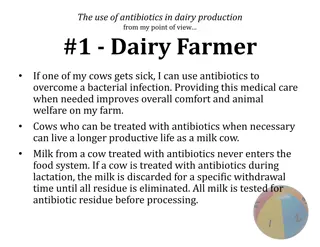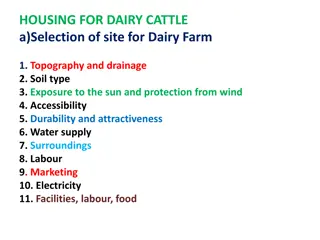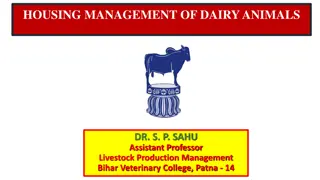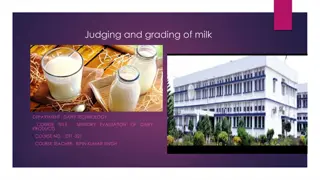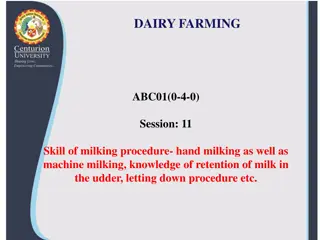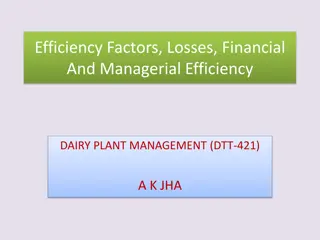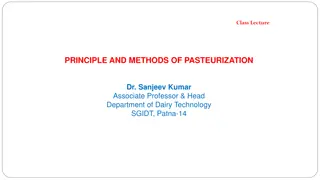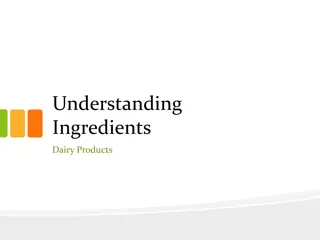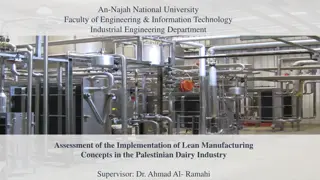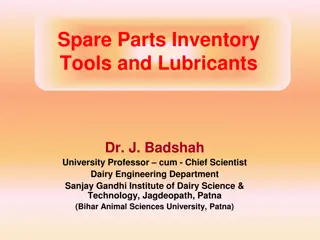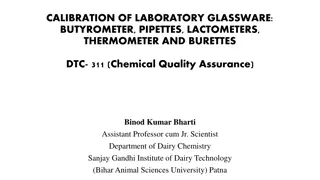Dairy Engineering: Sachet Form Fill Seal System Overview
This information discusses the working of a Sachet Form Fill Seal (FFS) system used in dairy engineering for milk packing. It covers the process of film feeding, sealing, and pneumatic control, emphasizing the key components and mechanisms involved in the packaging process.
Download Presentation

Please find below an Image/Link to download the presentation.
The content on the website is provided AS IS for your information and personal use only. It may not be sold, licensed, or shared on other websites without obtaining consent from the author. Download presentation by click this link. If you encounter any issues during the download, it is possible that the publisher has removed the file from their server.
E N D
Presentation Transcript
Sachet Form Fill Seal System Dairy Engineering(DTE 212) Dr. J. Badshah University Professor cum - Chief Scientist Dairy Engineering Department Sanjay Gandhi Institute of Dairy Science & Technology, Jagdeopath, Patna (Bihar Animal Sciences University, Patna)
Working of FFS machine for milk packing Heat sealable plastic film is fed continuously from a film roll of film having thickness ranging from 50 to 80 micron normally. Sterilizing of film by UV rays and Folding of film longitudinally to form a cylindrical tube whose edges are sealed between vertical jaws While a continuous cylindrical tube moves down wards, a transverse heat seal is made by horizontal jaws to close the bottom of the sachet/pouch. The injection valve is opened for a preset time and a measured volume of liquid is filled above the seal A further seal above the liquid produces a pillow shaped flexible pouch and it is cut also to separate as an individual pack.
Pneumatic System Filtered and lubricated air supply at a pressure of 6 kg/cm2 Air filter, regulator, lubricator are provided to add desired no. of oil drops to the air flow by adjusting the knob located on it. Pneumatic cylinder for horizontal seal, vertical seal and film movement imparts necessary force required for sealing. The forward and backward control of cylinder is controlled by a cushionig screw and pneumatic air supply to cylinder. Feed rollers are so adjusted that they should return film equivalent to the sachet length required for maximum quantity to be packed. The master solenoid valve is connected for vertical, horizontal and looping cylinder. When the solenoid coil receives signal, it is energised, and valve gets opened and cylinder is actuated. The liquid filling solenoid valve is connected for the actuation of the liquid filling cylinder and filling line air regulator for the pre set time.
Film Feed System It has induction motor, clutch and brake card, main clutch brake combination, gear box and paper pulling. The clutch coil of the main clutch and brake system gets energized with 24 V dc thorough electronic programmer which connects gear box with motor. The rotating motion of motor is transmitted to the gear box via a clutch plate. The gear box turns the rubber nipprollers and pulls down the film to the required length. The 24 V dc applied to clutch coil is removed thereby the gear box rotation stops. Immediately below the niprollers, horizonta jaws are located. On the fixed horizontal jaw , another impulse heated element called horizontal electrode is mounted for sealing. The injection valve is located at the bottom of the filling tube just above the horizontal seal jaws. Injection air cylinder is at the top of the machine.
Electricals and Electronic System The supply is fed to electrical control panel, which is further distributed to three phase induction motor, heat control system, electronic control system etc. The heat control system consists of heat on/off switches, dimmer and heating transformers and heating elements. Two limit switches are mounted on rear side . When the seal jaws are opened, the limit switches which is called clutch and brake switch is in on position and another limit switch called sealing switch is in off position. When the auto switch is turned on, the brake releases and clutch engages and niproller begins to roll and film moves. The cam controlling the microswitch also rotates and releases the switch causing 1 microfarad condenser to charge. After one complete revolution, the cam returns to its starting position. Thus reclosing the microswitch and causing the 1 MFD capacitor to discharge. The brake will be applied and clutch will be released.
Electrical Components o Electrical Motor, 3 phase, 0.75 HP o Power Transformer for power card, 2.5 Amp, 230 V o Horizontal Transformer, 750 VA, 10 V o Vertical Transformer 750 VA, 20 V o Supply line for Power card of 24 V dc, 2.5 Ohm to all solenoid valves o 24 V dc Rectifier o 24 V dc Microswitch o 240 V Ac for EVP Card ( Non Regulated Supply) o 240 V Ac for Injection Card (Regulated Supply)
Electronic Cards Power Card Clutch and Brake Card EVP (Electro Valve Pressing ) Card Sealing Cards Injection Cards Cooling Cards Demagnetising Cards
